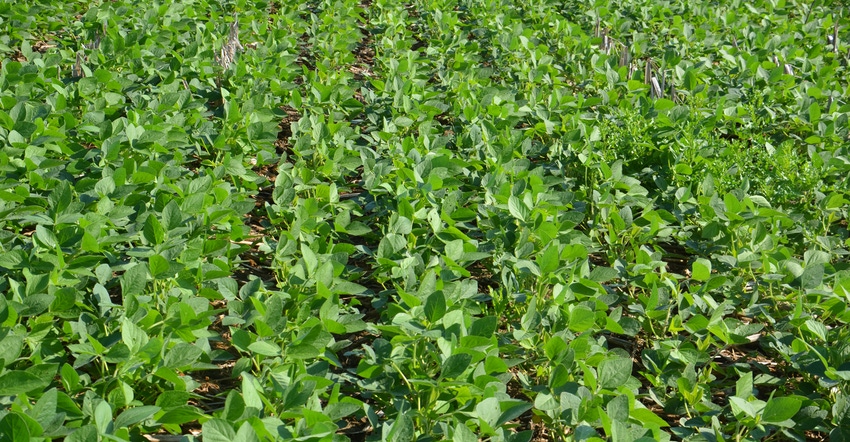April 16, 2018

The April 2018 Indiana Prairie Farmer included two articles about how adding sulfur could be key to increasing soybean yields. Shaun Casteel, a Purdue University Extension soybean specialist, is in his fourth year of testing the theory, and is looking for farmers to help him. The Indiana State Department of Agriculture is making a concerted effort through its INfield Advantage program to encourage testing the idea on farms.
We also encourage you to do so. Marion Calmer, an Illinois farmer and inventor, says we can’t improve something unless we can first measure results. He’s right. Just applying sulfur to the entire field and saying “maybe it helped” doesn’t cut it.
Changing environment
Sulfur is only a story because the environment in which you grow crops has changed over the past two decades. Casteel points out that until the early 2000s, soils and crops received ample sulfur from the atmosphere for free. Industry was forced to clean up emissions from smokestacks to comply with provisions of the federal Clean Air Act. There is clear evidence that sulfur emissions have declined dramatically. Sulfur levels in the soil have also decreased.
The result is that you’re growing crops in a different environment today. There is no debate that this change was caused by man. We set out as a society to reduce sulfur levels.
Open-ended questions
Howard Doster posed an interesting question after reading the sulfur articles. Doster, now retired, was a Purdue Extension agricultural economist for many years. “I wonder if soil pH is now dropping as fast as it did,” he says. “Is current rainfall less acidic? Is this a big deal?”
Joe Nester, Nester Ag LLC, Bryan, Ohio, has compiled information showing that the pH of rainfall has increased and is less acidic than it once was. The same provisions that led to less sulfur in the atmosphere are likely resulting in rain with higher pH.
Evening talk show hosts on WIBC, a radio station in Indianapolis, play a game called “Is this anything?” One host reads a news item, and the other decides if it’s worth talking about. Doster’s question, “Is this a big deal?” falls in that category. The answer depends on whom you talk to — experts don’t agree.
Nester suggests that perhaps rising pH makes phosphorus more available to move in water and leave a field. Phosphorus is more soluble once the pH is 6.0 or higher — that’s an agronomic fact. Is it one reason more phosphorus is reaching Lake Erie and causing algal blooms? That’s only a theory.
David Baker, longtime water quality expert at Heidelberg College in Tiffin, Ohio, doesn’t buy it. He contends instead that the bigger problem is phosphorus is stratified in the top few inches of the soil under no-till. He believes tilling soils one time to move phosphorus down before no-tilling again might help.
Good luck finding a soil conservation expert who agrees with that idea. Many claim that if you deep-till one time, you destroy everything you’ve gained in soil structure and soil health.
Who is right? We certainly don’t know. Hopefully more research and on-farm trials like the ones Casteel is doing with sulfur will bring answers. One thing is clear. You’re not growing crops in the same environment that you did 20 years ago. If everyone can agree that much is true, we may be on track to finding answers.
Comments? Email [email protected].
You May Also Like




